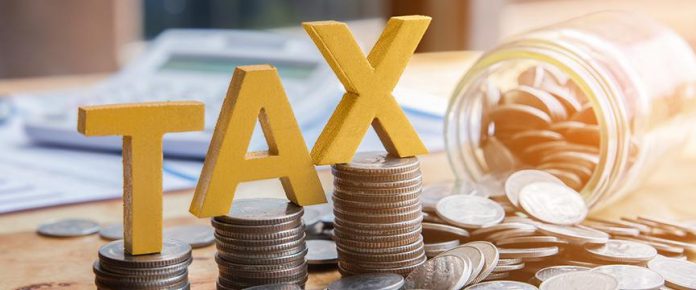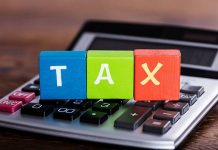This article has been written by Oishika Banerji of Amity Law School, Kolkata. This article serves as a guide to its authors with regard to advance tax online payment.
it has been published by Rachit Garg.
Table of Contents
Introduction
The amount of income tax that is paid in instalments throughout the year as opposed to in one large sum at the end is known as advance tax. Advance tax, which is often referred to as ‘earn tax’, must be paid in instalments by the due dates established by the income tax department. With the rise of technological inventions, convenience has become a new luxury for taxpayers. Online payment of the same has been an upfront activity, therefore. The present article seeks to guide the author on the online payment of advance tax alongside answering the relatable questions associated with it.
Why is advance tax important
The term ‘advance tax’ refers to income tax that is paid in advance for income received during a specific financial year. Typically, tax is due at the time income is earned. The payer must nonetheless estimate their revenue for the entire year in accordance with the tax regulations of advance tax. The tax is paid at particular intervals depending on this estimation. Here, it’s crucial that taxpayers estimate their income before figuring out their projected tax to determine whether they owe any advance taxes and, if so, how much.
Who should pay advance tax
Anyone whose projected tax due for the year is greater than or equivalent to INR 10,000 is required to pay an advance tax, according to Section 208 of the Income Tax Act of 1961. It is to be noted that senior citizens over 60 years without a source of business or profession-related income are exempt from paying advance tax.
Situations when you have to pay advance tax
- You are salaried but have a high income from interest or capital gains or rental income.
- You are a freelancer.
- You are running a business.
Benefits of paying advance tax
- Taxpayers’ stress levels are lower because of the payment of advance tax. Taxpayers can avoid financial stress and last-minute tax payments by paying their taxes in advance.
- The procedure of collecting taxes is faster and easier.
- As a result of generating interest on the money collected, it enhances government funding.
- People who pay their taxes in advance avoid missing payments.
- It gives firms a better understanding of their annual income and aids in sound financial management.
Which forms are required in advance tax
Challan No. ITNS 280 is the form that needs to be duly filed on the prescribed due dates. Pre-requisites of Challan No. ITNS 280 are:
- PAN Details: Post accurate PAN information with care; your tax will be placed in someone else’s name.
- Assessment Year: Since the tax is being sent out in advance for the following fiscal year, choose the relevant assessment year for payment.
- Selecting the type of payment: The form requires the taxpayer to indicate the type of payment. It would be an advance tax if the tax were paid for the same financial year using the projected income. Self-assessment tax would apply if the tax was paid after the fiscal year ended.
A Challan Identification Number (CIN) will be given following the payment. You must remember this and use this CIN when submitting your income tax return. Additionally, confirm once the IT department has gotten the payment made online using ITNS 280.
How to calculate advance tax dues
You can determine your tax obligations using the advance tax calculator available on the Income Tax Department’s official website. Simply enter your information in the calculator’s many mandatory fields to calculate your taxes. The type of taxpayer, net taxable income, surcharge, and whether the organisation has chosen and qualifies under Sections 115BA, 115BAA, or 115BAB are a few of these fields. You can also compute your advance tax liability manually using these steps.
- Step 1: Determine earnings for a given year.
- Step 2: Calculate gross taxable earnings for a given year.
- Step 3: Calculate the payable tax amount according to the applicable tax slab.
- Step 4: Subtract the Tax Deducted at Source (TDS) amount that has already been deducted or the TDS that will be deducted based on the applicable tax slabs for the various earnings.
If the tax liability ever exceeds Rs. 10,000 after TDS deduction, they must follow the rules for advance tax payment.
What if you pay advance tax less or more than required for a financial year
Four dates, along with the amount of advance tax that must be paid on each, are specified in the Income Tax Act, 1961. If, in an unlikely event, you paid the excess advance tax, you would be eligible for a refund under Section 237 of the Income Tax Act, 1961, subject to Section 244A of the Act if the excess exceeds 10% of the tax liability, and subject to 6% interest per year on the excess amount. If, as of March 15, you discover that there is still an unpaid advance tax, you have until March 31 to pay it, and it will still be considered an advance tax.
What is the penalty for missing the dates of payment of advance tax
Under Sections 234B and 234C of the Income Tax Act, 1961, you will be assessed interest if you miss the deadlines for paying advance tax.
Can deduction under Section 80C of the Income Tax Act, 1961 be claimed while estimating income for determining my advance tax
Yes, you may make a Section 80C deduction while calculating your income to determine your advance tax.
Is an NRI liable for payment of advance tax
Yes, in accordance with the provisions of the Income Tax Act, 1961 in effect for the applicable assessment year, an NRI is required to pay an advance tax on income generated in India.
How to check advance tax payment status
- To check the status of your advance tax payment challan, go to https://tin.tin.nsdl.com/oltas/index.html.
- Select CIN (Challan Identification Number) Based View.
- Then enter the required details being asked for in order to view the status.
- You can also check the list of advance tax payments made by logging in to your income tax account at https://www.incometaxindiaefiling.gov.in/home and going to My Account, then viewing Form 26AS (Tax Credit), and entering the financial year and type of view/download.
Refund in advance tax payment
If the Income Tax Department determines at the end of a particular assessment year that you have overpaid your tax, it will return the excess amount. By completing and submitting Form 30, taxpayers can request a refund. They have one year from the conclusion of the assessment year to file the claim.
How to pay advance tax online
After visiting the e-payment facility on the official web portal of the Income Tax Department, the following steps need to be followed:
- Step 1: Select the option for tax applicable
- Step 2: Choose the type of payment
- Step 3: Select your preferred month of payment.
- Step 4: Enter your PAN, assessment year, email address, phone number, home address, and any other pertinent information. Then choose next. Depending on the chosen payment method, the page will next send you to either a payment gateway or a net banking page.
- Step 5: Pay the invoice. Keep a copy of the payment challan on hand for when it comes time to submit your company’s ITR.
How to pay your income tax online with Challan 280
Challan 280 is one way to pay your advance tax, regular assessment tax, self-assessment tax, additional charges, etc. online. The process has been laid down hereunder:
- Step 1: Selection of Challan
Select Challan 280, followed by which Go to the tax information network of the Income Tax Department and click on ‘Proceed’ under the Challan 280 option.
- Step 2: Enter personal information
For individuals who are paying tax,
- Step 1: Select (0021) Income Tax (Other than Companies).
- Step 2: Select the type of payment correctly from the following:
- (100) Advance Tax.
- (102) Surtax.
- (106) Tax on Distributed Profit.
- (107) Tax on Distributed Income.
- (300) Self Assessment Tax.
- (400) Tax on Regular Assessment
Select ‘Self-assessment tax’, if you have any taxes due to pay while filing your income tax returns.
- Step 3: Select the mode of payment you wish to choose. There are two modes of payment available, namely, net banking or debit card.
- Step 4: Select the relevant Assessment Year (AY). For example, for the period 1st April 2021 – 31st March 2022, the relevant AY is 2022-23.
- Step 5: Enter your complete address.
- Step 6: Enter the captcha in the given space and click on ‘Proceed’.
- Step 3: Double-check Information
You need to double-check the data displayed and send the request to the bank. You will then be taken to the payment page for your bank.
- Step 4: Check Receipt (Challan 280)
The next screen after making the payment will display a tax receipt with the payment information. On the right side of the challan, you can see the BSR code and challan serial number. Take a screenshot or save a copy of the tax receipt. To complete your tax return, you must input the BSR code and challan number.
- Step 5: Declaring the taxes to be paid
You must include this information in your income tax return after paying the tax. Enter the BSR code and challan number from Challan 280 on the ‘Self Tax Payments’ tab.
Advance tax payment due dates
You must keep in mind the deadlines for paying advance tax for companies, in addition to learning how to do so online.
| Sl. No. | Amount of tax payable | Due date for tax instalment |
| 1 | At least 15% of advance tax liability | Either on or before 15th June |
| 2 | At least 45% of advance tax liability | Either on or before 15th September |
| 3 | At least 75% of advance tax liability | Either on or before 15th December |
| 4 | 100% of advance tax liability | Either on or before 15th March |
What to do when you have selected the wrong assessment year while paying tax
Even if you pay your taxes carefully, you still run the risk of choosing the incorrect assessment year when you make your payment. Lack of understanding of the definition of ‘assessment year’ is the main factor in such errors. The year that your taxes are assessed is referred to as the assessment year. It is actually the year after the one for which you are making the tax payment. The assessment year to pay this tax will be 2022–203 if you are making tax payments for the financial year 2021–2022.
- Step 1: Even if the assessment year you selected when paying the tax is wrong, include the payment information when you submit your IT returns for the year.
- Step 2: To get the challan corrected for the error in the ‘assessment year,’ contact the office of your jurisdictional assessing officer. On the income tax department’s e-filing website, you can find the assessing officer’s appropriate office. If you have recently paid a challan, you may ask the bank to amend it within seven days after the deposit date.
- Step 3: The assessing officer (AO) will probably issue a notice when processing your returns since the payment information does not match the records.
- Step 4: Inform the AO of the specifics of the mistake made when paying the tax.
- Step 5: In accordance with Section 154 of the Act of 1961, you must additionally file a rectification of return.
- Step 6: If the AO is persuaded by your rectification request, he has the authority to make the necessary modifications to your return. Once he grants your request, he will close it after making the necessary adjustments to the IT returns.
Correction of error-tax payments made online
If a taxpayer needs to make changes to the challan details, they must get in touch with their assessing officer having competent jurisdiction. An assessing officer is assigned to each taxpayer for the purpose of evaluating their income tax returns and related matters.
Through the ‘Know Your AO’ page on the e-filing system, you can find the jurisdictional assessing officer. The data is accessible using a mobile-based OTP. As an alternative, you can find your jurisdictional assessing officer by logging into your e-filing account and going to ‘profile settings-My profile-PAN data’ on the e-filing portal.
Once you have identified your jurisdiction’s evaluating officer, go to them in person at their workplace and ask them to remedy the challan’s mistakes. You must submit a letter in the required format together with a copy of the paid challan.
Common queries related to online payment of advance tax
Is it necessary for me to pay taxes online? If not, how can I pay it?
Only the taxpayers listed below are required by law to make their tax payments online:
- Companies.
- Taxpayers who are not businesses subject to audit under Section 44AB may pay their taxes in cash by presenting the challan at authorised banks. However, as it is simple and time-saving, you can also use the e-payment option.
Are there any benefits of paying taxes online?
E-payments not only save time, but they are also available 24/7. Furthermore, unlike conventional payment methods, which only immediately credit the government for taxes paid, online payment methods immediately credit the government.
What are the basic things I need to be prepared for in order to do my taxes online?
Make sure your bank account is set up for internet banking and that you have an internet connection before you attempt to pay taxes electronically. You can make a payment using someone else’s net banking account if you don’t have access to your own. To ensure that you receive the credit, please ensure that the taxes are discharged in your name and exclusively against your PAN.
What taxes can be paid electronically?
The ability to pay taxes online is now available for practically all types of taxes. The following taxes can be paid online:
- Tax on income.
- Corporate tax.
- TDS.
- Tax collected at source, or TCS.
- STT for Securities Transactions.
- Levy for equalisation.
Whom should I contact if I face any issues while making a tax payment online?
If you run into any issues while making an e-payment on the NSDL website, you can get in touch with the TIN call centre. You can get in touch with your bank if you experience any issues with the payment gateway of your bank.
Conclusion
Making the calculation and payment of advance tax on dividend income simpler for taxpayers is one of the proposals in the Union Budget 2021, which was unveiled by finance minister Nirmala Sitharaman on February 1st, 2021. This will assist them in avoiding interest payments on advance taxes on dividend income, which they previously had to make due to difficulties determining the accurate dividend income. The plan aims to put capital gain tax compliance and dividend tax compliance on par. Only after the taxpayer realises the gains in their possession must they pay capital gains tax. Interest is charged for advance tax payments that are made late, but this can be avoided as the calculations get simpler. This amendment is from 1 April 2021 and will apply to the assessment year 2021 to 2022 as well as the subsequent assessment years.
References
- https://www.livemint.com/money/personal-finance/do-you-need-to-to-pay-advance-tax-hurry-up-march-15-is-last-date-11647151624114.html.
- https://cleartax.in/s/advance-tax.
Students of Lawsikho courses regularly produce writing assignments and work on practical exercises as a part of their coursework and develop themselves in real-life practical skills.
LawSikho has created a telegram group for exchanging legal knowledge, referrals, and various opportunities. You can click on this link and join:
Follow us on Instagram and subscribe to our YouTube channel for more amazing legal content.
 Serato DJ Crack 2025Serato DJ PRO Crack
Serato DJ Crack 2025Serato DJ PRO Crack












 Allow notifications
Allow notifications



